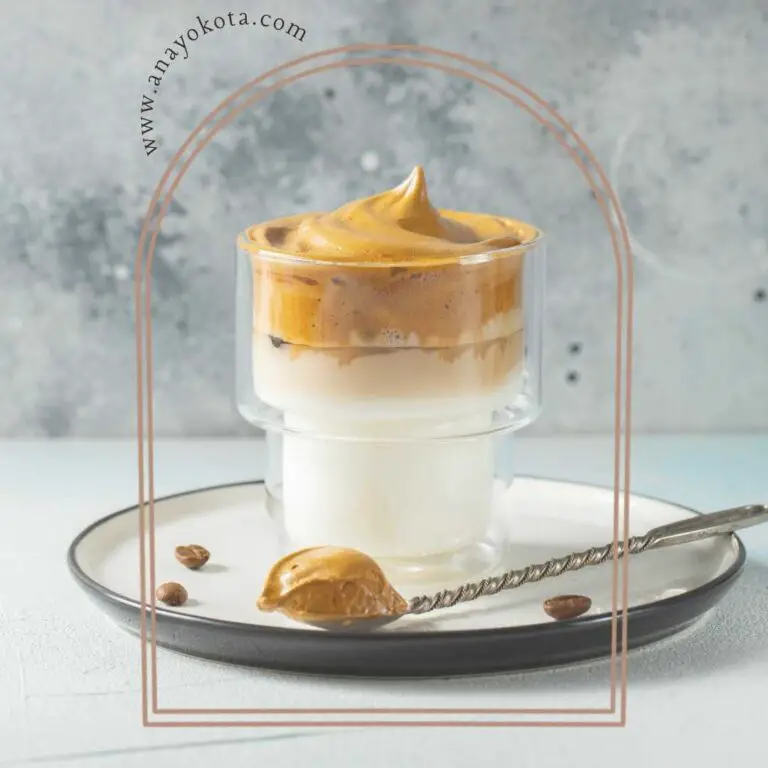This post may contain affiliate links. Please read my disclosure policy for more info.
As Korean food takes the world by storm, people may wonder what does kimchi taste like? Search no further as I break down the taste, history, and ways to eat this delicious Korean staple.
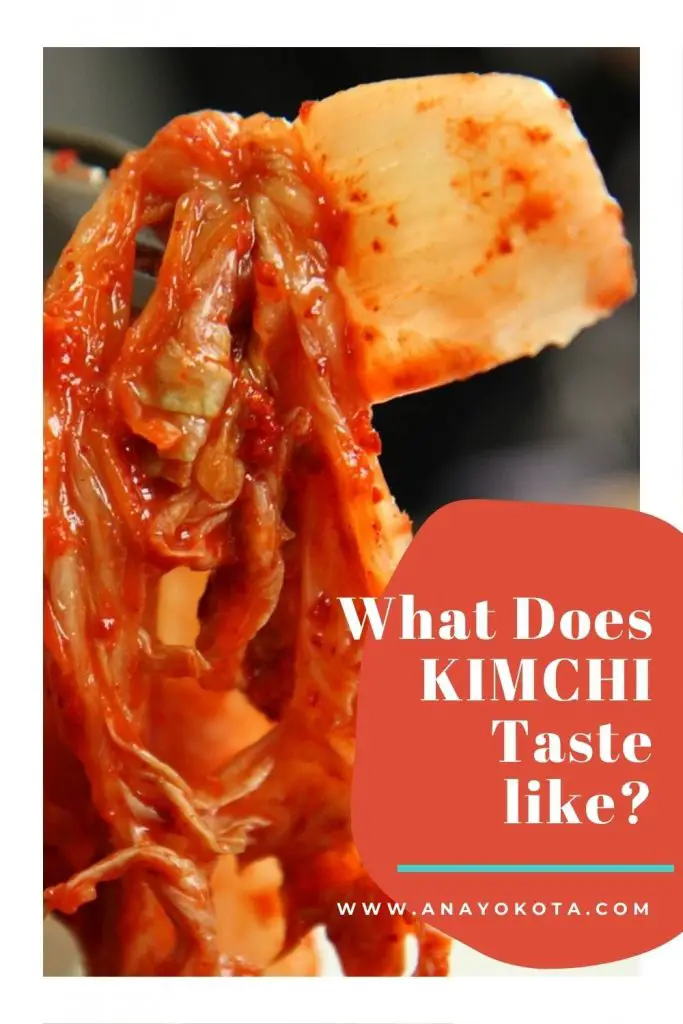
If you’ve ever been around Korean food, you will almost always have kimchi on the table. For those who have never tasted this phenomenon may think, “what does kimchi taste like?”
Kimchi is a Korean dish that can be made with various ingredients. It depends on the recipe and how it is prepared! Koreans love kimchi because it’s traditionally served at every meal, including breakfast and dinner. Some people say that the smell of kimchi stinks, but there are many others who disagree as they find the odor to be appetizing.
This post will discuss ‘what does kimchi taste like,’ ‘when it goes bad and good?’ ‘what are the best ways to use kimchi in a dish,’ and ‘why do Koreans eat so much of this dish?’ For your convenience, I’ve provided a table of contents so you can skip ahead.
If you would like to discover more about how Korean food is eaten during meals such as how food is shared with people, here is a great article on Korean table manners to help get you started.
WHAT IS KIMCHI
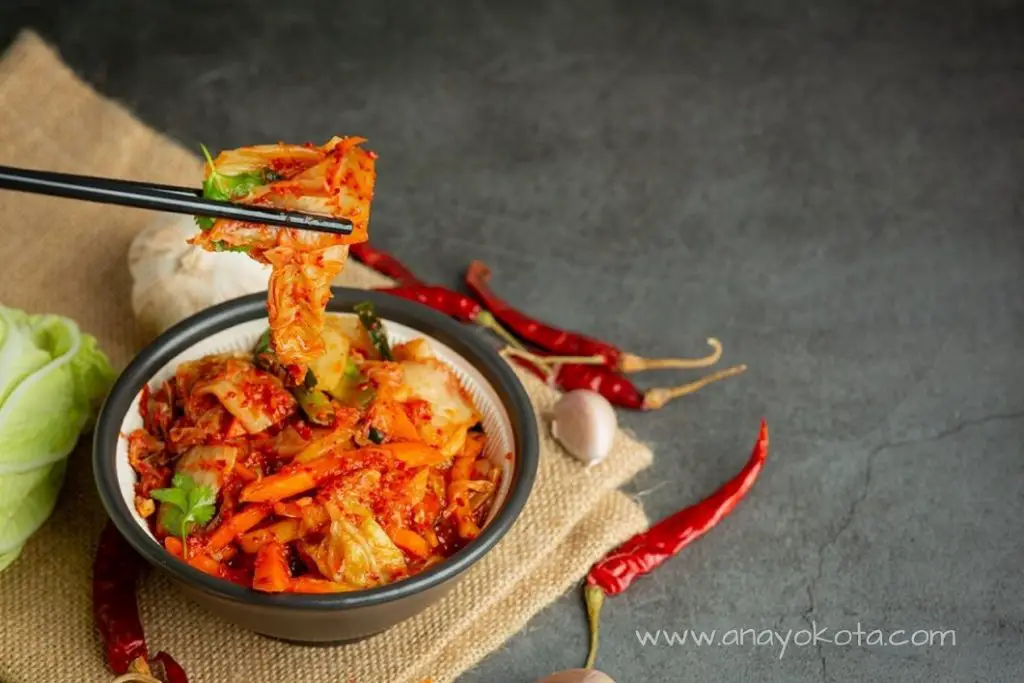
Kimchi in Korean is Kimchi! What does kimchi mean? Translated kimchi means fermented vegetables.
Hence, Korean kimchi is a dish that is fermented with a combination of vegetables and spices. It has been around for centuries in Korea, but it’s becoming popular all over the world these days. Kimchi is widely loved because it makes food taste better and also increases your health too.
There are over 200 different types of kimchi, but the most common one is made with cabbage or radish, which are both common ingredients found in your local grocery store. Some people like to add cucumber and carrots into their recipe for some added nutrients.
As you can see, kimchi can be made with so many different ingredients and in so many different ways, such as fresh, fermented, or in a watery brine that makes it salty, sweet, and sour.
The kimchi spice comes from all of the different peppers, such as green chiles or fresh hot red pepper flakes. Additionally, the tang comes from the rich fermentation process.
Some may wonder, “Is kimchi spicy?” Well, it depends. As mentioned earlier, there are over 200 different kinds of Korean kimchi. You certainly can have kimchi that is not spicy as well as kimchi that will make you run for a cool glass of milk.
HISTORY OF KIMCHI

The origin of kimchi is not known for sure. One theory is that kimchi was invented by Korean farmers in the early 18th century to preserve vegetables and prevent them from rotting, while another suggests it may be a form of traditional Chinese cabbage cuisine called “suan cai” which has been adapted into Korean culture with different spices.
Regardless of its origins, kimchi has been a staple in Korean cuisine for centuries. It is not just a staple, Kimchi represents Korean culture as a national dish.
WHAT DOES KIMCHI TASTE LIKE
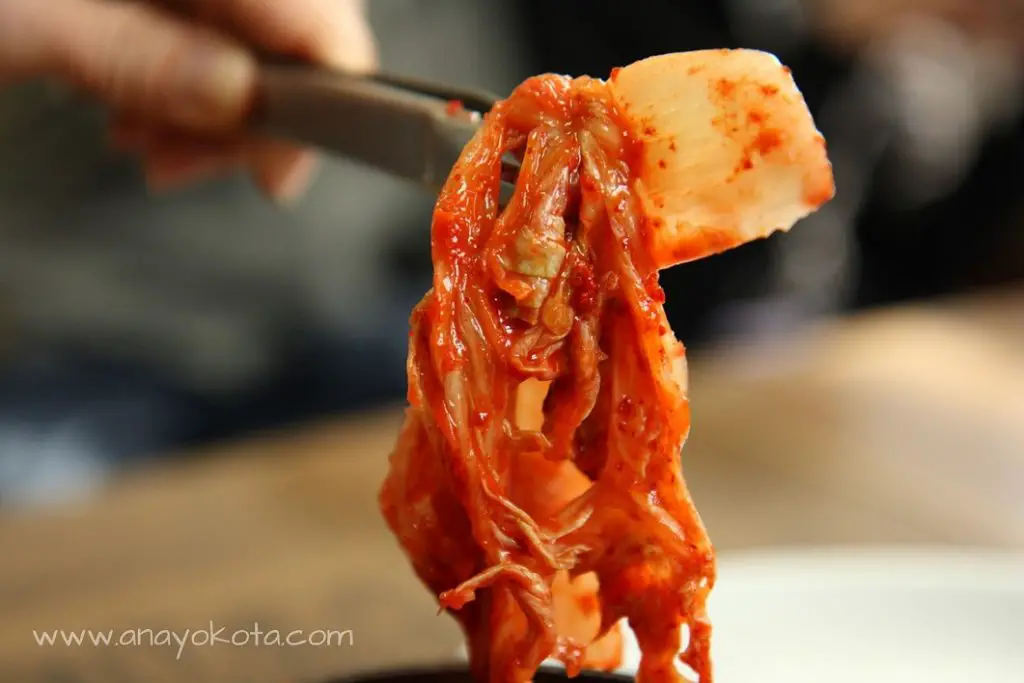
What does it taste like? Kimchi’s flavor can vary depending on what ingredients are used and how long it has been fermented for – from sweet to sour! Essentially, kimchi tastes like a combination of sour, salty and spicy.
Koreans like kimchi because it is traditionally made with a mixture of spices to balance the saltiness and acidity: red pepper flakes (gochugaru), garlic, ginger, green onions or shallots, fish sauce and sugar. What you add is up to you!
What does kimchi smell like? Pretty much how it tastes, salty, spicy, tangy and slightly sweet.
WHAT DOES BAD KIMCHI TASTE LIKE
What does kimchi taste like when its bad? Bad kimchi tastes beyond sour and has a sour smell. To say the least, it isn’t very appetizing, but technically it is still safe to eat if it was properly stored in the refrigerator. If you can get over the initial reaction, then there are benefits in consuming this healthy probiotic food! Remember, sour kimchi means that you are getting good probiotics which can help with digestion and are rich in vitamins.
As a matter of fact, my favorite “freshness level” for kimchi is when it is really sour. I absolutely am addicted to the zing you get from sour kimchi; it’s as if it was made in carbonated water. Another reason why I love super sour kimchi is because you can enjoy a few of the most popular kimchi dishes such as fried rice, kimchi ramyun, and kimchi jjigae.
However (this is a big, “however”), if it was not properly stored and/or if you see mold, it is obviously not good for you to consume. Whenever you see mold or taste the flavor of mold, do not consume it because it is bad kimchi!
HOW DOES KIMCHI FRIED RICE TASTE LIKE
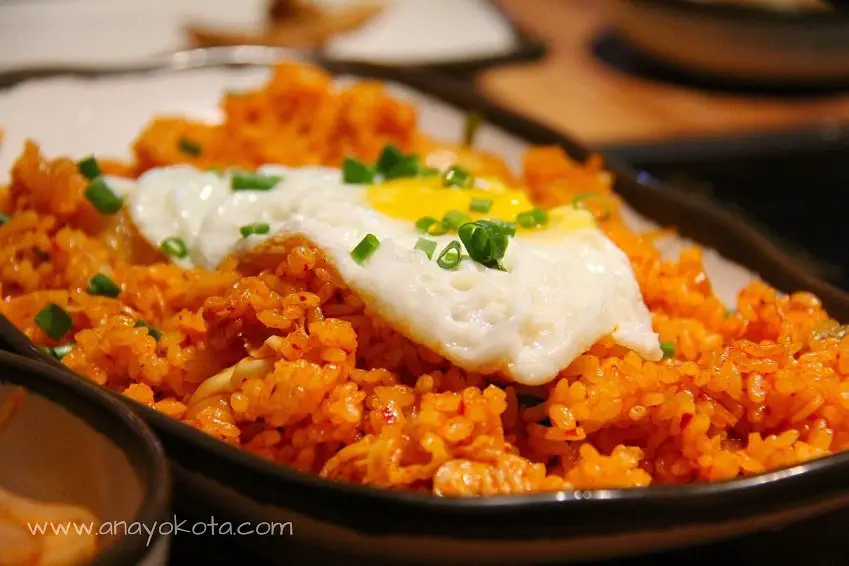
What does kimchi taste like when you fry it with rice? Kimchi fried rice is delicious! It is a common street food in Korea and a wonderful option for vegetarians. The kimchi adds a spicy, sour flavor while the rice is served with a variety of meats and vegetables to make it even more filling.
When making kimchi fried rice you can use any type of meat that you prefer – such as beef, pork or chicken – but Korean style kimchi usually contains pieces of pork. My favorite kimchi fried rice is kimchi with spam, eggs and diced vegetables.
In case you were wondering, kimchi does not need to be sour in order for it to taste good when making kimchi fried rice. So, yes, you can use fresh kimchi! A great pro-tip when using fresh kimchi is adding a little bit of gochujang (Korean red chili pepper paste) and a little bit of vinegar to give it that kimchi tang component. This trick will help enhance the kimchi flavor all while still using fresh kimchi.
You can also adjust the spice level. In general, kimchi fried rice is spicy due to the kimchi. However, you can always decrease the spiciness by either adding other ingredients such as diced veggies or rice.
Last but not least, it is most common to use napa kimchi versus any other type of kimchi such as radish or cucumber kimchi. I highly recommend making kimchi fried rice with napa cabbage kimchi because it has the best texture when frying with the rice.
WHAT DOES KIMCHI RAMEN TASTE LIKE

What does kimchi taste like in ramen? Kimchi ramen tastes different, depending on whether you make it with sour kimchi or fresh kimchi. The taste of the soup and noodles changes also. For example, sour kimchi will give the ramen a tangier flavor, while fresh kimchi will give the ramen a sweeter flavor.
It also depends on the type of ramen you mix with the kimchi. For example, combining Korean ramen and fresh or sour kimchi will give you a different flavor than if you combine Japanese style soup noodles with either type of kimchi.
Once you have all the ingredients prepared, it’s time to cook. Bring the broth and kimchi up to a boil, then add your instant ramen noodles. Cook over medium heat for three more minutes or until they’re cooked through. I personally like to finish my ramen by adding an egg for some protein. This is so fast and easy, if you want to learn, just let me know in the comment section below.
On the other hand, if you want the essence of fresh kimchi, you can use kimchi as a topping for your noodle dishes instead of cooking it in the broth.
WHAT DOES KIMCHI JJIGAE TASTE LIKE
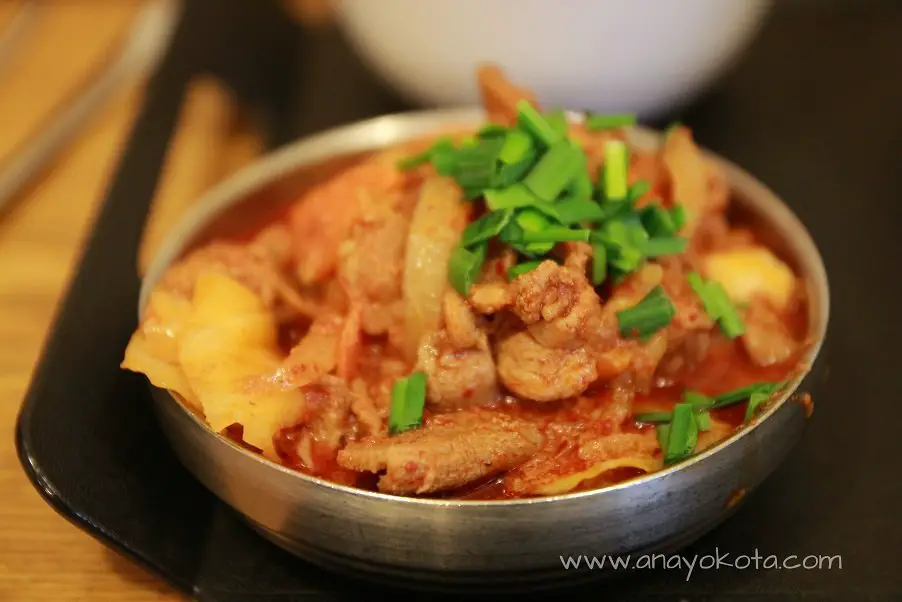
What does kimchi taste like in soup? In other words, what does kimchi jjigae taste like? It tastes hot! Kimchi jjigae is a hot soup made with many variations depending on what ingredients you combine in the soup.
Since there are so many different ways to make kimchi jjigae, I will explain what the most basic kimchi jjigae tastes like. For example, the most popular way to make kimchi jjigae is to use kimchi, pork belly and anchovies (for the broth).
It is typically served with a bowl of white rice on the side. After cooking for about 30 minutes, you can taste this dish by using some salt or sugar as seasoning if necessary. It’s also common to add tofu to the soup during its last minute or two of simmering time so that it cooks in the hot broth before spooning over bowls.
What kind of kimchi do I need when making good kimchi jjigae? As discussed throughout this article, kimchi comes in many different flavors like sweet, spicy, sour and salty (also known as pungent). Though you can use pretty much any type of kimchi, the best type of kimchi is sour napa cabbage kimchi. This will result in the best kimchi flavor.
HEALTH BENEFITS OF KIMCHI

Is kimchi healthy? Can you say, ‘poo-poo time!”? This stuff is chalk full of wonderful probiotics that help your system move. Meaning, the health benefits of kimchi are plentiful outside of its great flavor.
The fermentation process makes kimchi a probiotic rich food, which means that consuming it can help replenish the good bacteria in your gut so you feel better and healthier. In other words, kimchi helps maintain healthy gut bacteria and aids in mineral absorption. (SOURCE).
Kimchi is also high in vitamin A, vitamin C beta-carotene, calcium, magnesium, and fiber, which can help promote regular bowel movements (SOURCE).
Kimchi is high in antioxidants called polyphenols (including quercetin) that are great for your health! Polyphenols have been shown to reduce inflammation and the risk of chronic disease like diabetes, heart disease and cancer (SOURCE).
CONCLUSION
Koreans like kimchi so much because it is a healthy dish that can be made in many different ways. The health benefits of this popular food include its ability to improve digestion, reduce heart disease risk factors, and maintain intestinal balance. There are also plenty of tasty recipes for those looking to explore the versatility of this Korean staple – from fried rice to ramen or jjigae!
Give these traditional Korean flavors a try today and see how they measure up with your favorite Americanized versions. Don’t forget about other famous foods such as bibimbap, bulgogi (Korean barbecue), and tteokbokki when you’re exploring the world’s cuisine!
If you would like to learn more about these Korean recipes, I have a whole page full of delicious (and fully tested) recipes on the blog such as Korean Pickled Garlic, Korean Fish Cakes, and much more!
What is your best kimchi brand? There are so many different brands of kimchi, if you would like me to conduct a kimchi review of the best store bought kimchi, let me know in the comments!
Happy Kimchi 🙂









